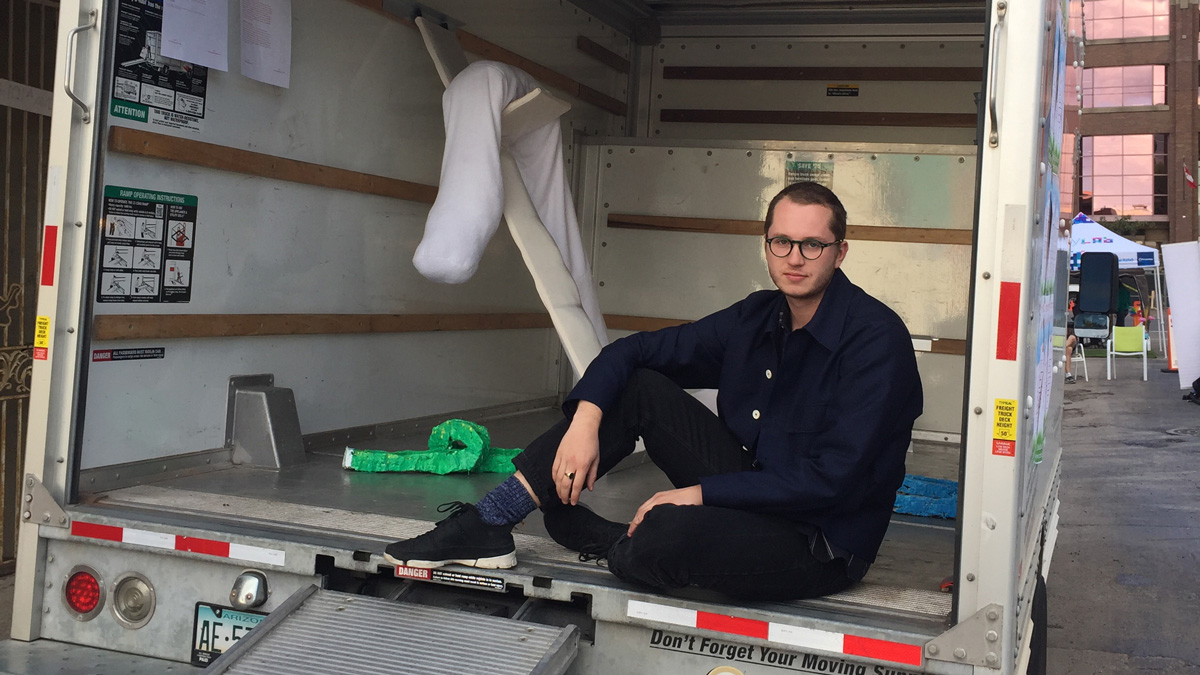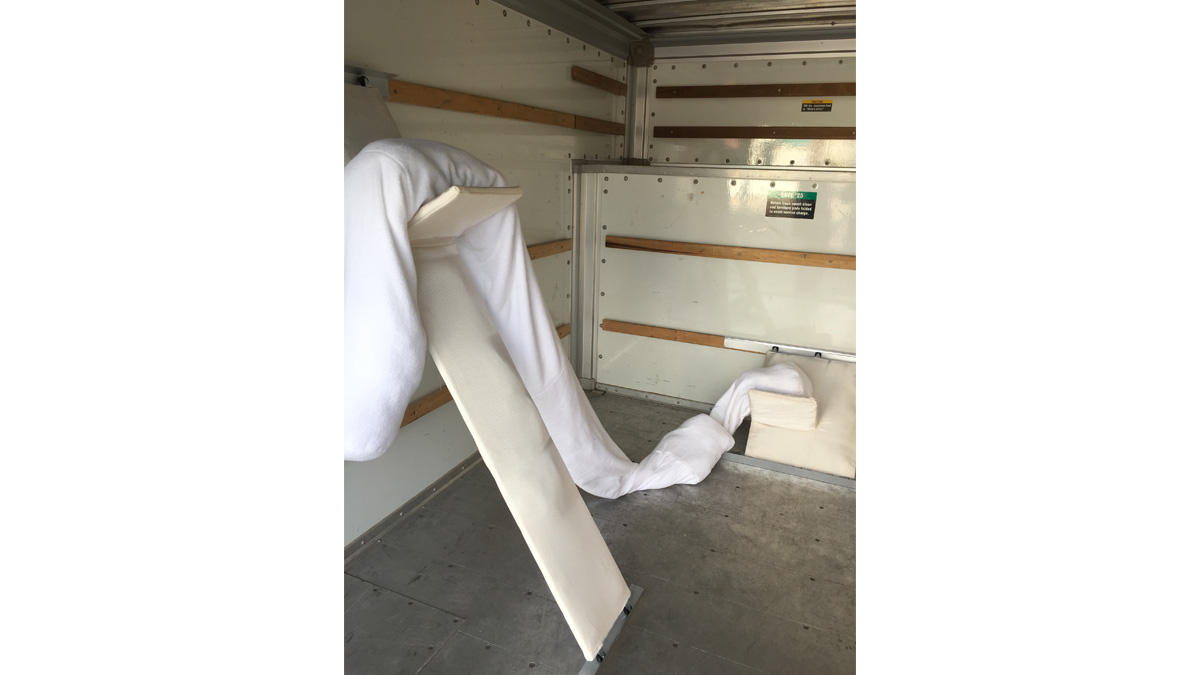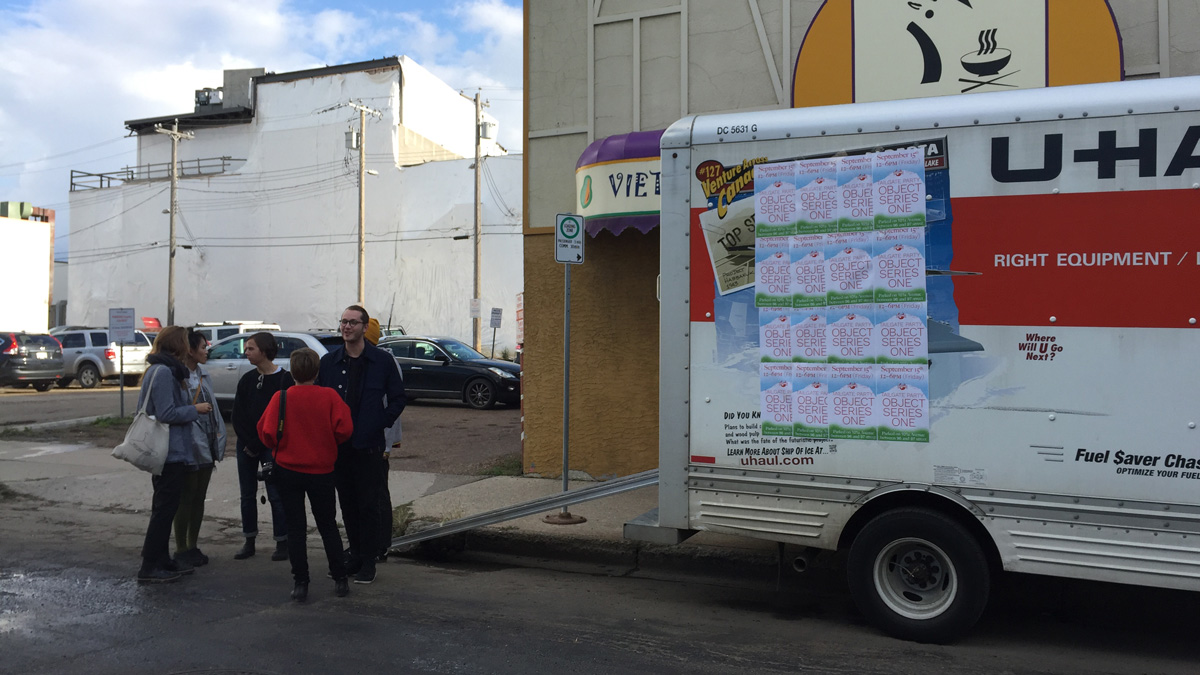Maybe Art Should Be for Everyone: A Review of PARK(ing) Day 2017
 Arden Burtnik
Arden BurtnikAt Edmonton’s rendition of the 16th annual worldwide PARK(ing) Day event last Friday, Daniel Walker, a graduate student studying Art History at the U of A, had stationed the U-Haul van he rented on the south side of 101A Avenue, between 96th and 97th Street. Pejoratively called “Tailgate Party,” Walker had rented the van to act as a pop-up art gallery for the day. Inside, he hosted works by Edmonton artists that centered around mass-produced domestic products.
Located at the back wall of the van were two works from Leila Plouffe, titled Leaning. Small, soft mattresses — on the verge of being futons — were propped against the wall at 45-degree angles and tiny wheels enabled them to slide along the wall, as if they were sliding upholstered library stairs. Plouffe is a recent graduate of the University of Alberta’s BFA painting program, and her work is an attempt to imbue everyday items with their own agency. What if quotidian objects, like a forlorn murphy bed, were designed to fail?

With the U-Haul situated where it is — on the outskirts of downtown and the perimeter of Chinatown, with the women’s shelter down the street and the Hope Mission only a few more blocks away — I can imagine the circumstances under which Leaning would come off as tasteless in the face of such poverty, but it is worth noting that our city is already populated with a plenitude of public design works that are purposefully inhospitable to homeless populations, such as the impossibility of sleeping on a city bench when there is an armrest sectioning off each seat, or how (and this is truer in larger cities) small spikes are implanted in front of entrances to do the same. Leaning reads as a more cynical version of anti-homelessness design practices because a bed’s purpose is to be a place of sleeping, warmth, and security. Plouffe’s bed, in contrast, is so useless that it spites all other makeshift beds that homeless people must resort to.
Having been given a tour of the van from Walker and an overview of his curatorial direction (“allowing objects to fail at their functions allows us to reorient our lives towards them”), we stepped outside to take some photos. There were other booths stationed along the street from people doing karaoke to a crowd of three to a group of students performing improv theatre, but Walker’s had the most attention, so when a surly man from the neighbourhood came to voice his disgust at the entire operation, he picked Walker and the U-Haul as his audience.
“What are you doing to help the community?” the man yelled, in a general version of outrage that had no mandate other than to voice its opinion.
Nobody answered. He hadn’t come for an answer. He came to scold the crowd for not doing the complicated and difficult groundwork that one has to do if they are interested in alleviating entire communities from systemic poverty.
After a while he left. He called us privileged a few more times. None of us claimed we weren’t, but neither did any of us claim to be doing anything to be helping Boyle Street other than bringing bodies and movement and artwork into a grey side street and parking lot.
I wish the conversation were more nuanced than gentrifier and gentrified. At that moment, however, it didn’t seem that way. I left wondering how the encroachment of downtown into Boyle Street and McCauley would affect those who live there now and those who have nowhere else to go.





